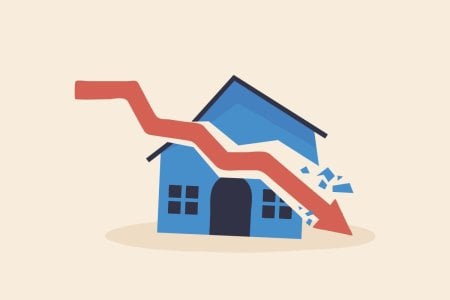Is Negative Gearing Causing the Housing Crisis? — by Noel Whittaker
- Replies 16
Noel Whittaker is the author of Wills, Death & Taxes Made Simple and numerous other books on personal finance. Email: [email protected]
Negative gearing is back in the spotlight, with several proposals to alter how property tax deductions work. Suggestions include banning negative gearing for properties altogether or limiting it to just two properties.
Advocates of these changes argue that current rules provide investors with an unfair tax advantage while locking first-home buyers out of the market. But these claims don't hold water. Negative gearing is not a huge tax loophole. Most property investors fall into the 30% tax bracket, meaning the government covers 30% of any loss, and the investor bears 70%. That’s far from a tax rort. Plus, many of these losses are due to non-cash deductions like depreciation, which are recouped when the property is sold.
It’s crucial to consider how any changes would be implemented. No government heading into an election would eliminate tax deductions for existing rental properties. Any new rules would need to be grandfathered, which would discourage existing investors from selling and deter potential investors from buying. It’s a zero-sum game. The real cause of the housing unaffordability crisis is a rising population, which is fuelling demand.
There’s been much talk about what happened when Paul Keating changed the rules back in 1985, but people seem to forget that interest was still deductible – investors could ‘quarantine’ their rental property losses. While they couldn't offset these losses against other income to reduce their tax bill in the current year, they could carry forward the losses and apply them to future rental income or capital gains from the sale of the property.
So the losses weren't completely disallowed: they were deferred. Investors had to wait to benefit from the deductions until they had future rental income or sold the property, at which point the quarantined losses would be used to reduce tax liabilities.
Lorem ipsum dolor sit amet, consectetur adipiscing elit. Quisque in diam id erat facilisis consectetur vitae vel urna.
Ut lacus libero, suscipit auctor ipsum sit amet, viverra pretium nisl. Nullam facilisis nec odio nec dapibus. Integer maximus risus et velit porttitor ullamcorper
Negative gearing is back in the spotlight, with several proposals to alter how property tax deductions work. Suggestions include banning negative gearing for properties altogether or limiting it to just two properties.
Advocates of these changes argue that current rules provide investors with an unfair tax advantage while locking first-home buyers out of the market. But these claims don't hold water. Negative gearing is not a huge tax loophole. Most property investors fall into the 30% tax bracket, meaning the government covers 30% of any loss, and the investor bears 70%. That’s far from a tax rort. Plus, many of these losses are due to non-cash deductions like depreciation, which are recouped when the property is sold.
It’s crucial to consider how any changes would be implemented. No government heading into an election would eliminate tax deductions for existing rental properties. Any new rules would need to be grandfathered, which would discourage existing investors from selling and deter potential investors from buying. It’s a zero-sum game. The real cause of the housing unaffordability crisis is a rising population, which is fuelling demand.
There’s been much talk about what happened when Paul Keating changed the rules back in 1985, but people seem to forget that interest was still deductible – investors could ‘quarantine’ their rental property losses. While they couldn't offset these losses against other income to reduce their tax bill in the current year, they could carry forward the losses and apply them to future rental income or capital gains from the sale of the property.
So the losses weren't completely disallowed: they were deferred. Investors had to wait to benefit from the deductions until they had future rental income or sold the property, at which point the quarantined losses would be used to reduce tax liabilities.
Lorem ipsum dolor sit amet, consectetur adipiscing elit. Quisque in diam id erat facilisis consectetur vitae vel urna.
Ut lacus libero, suscipit auctor ipsum sit amet, viverra pretium nisl. Nullam facilisis nec odio nec dapibus. Integer maximus risus et velit porttitor ullamcorper
Read more for FREE!
Become a member today and join over 200,000 Australians already taking advantage of daily news, weather, petrol costs, games, jokes, deals and more.
-
FREE 400-page Discount eBook upon joining
-
FREE Aussie-made eBook & many more
-
Multiple daily discounts for members
-
No payment required
Register Faster Using
Or Register with email
Already a member?








